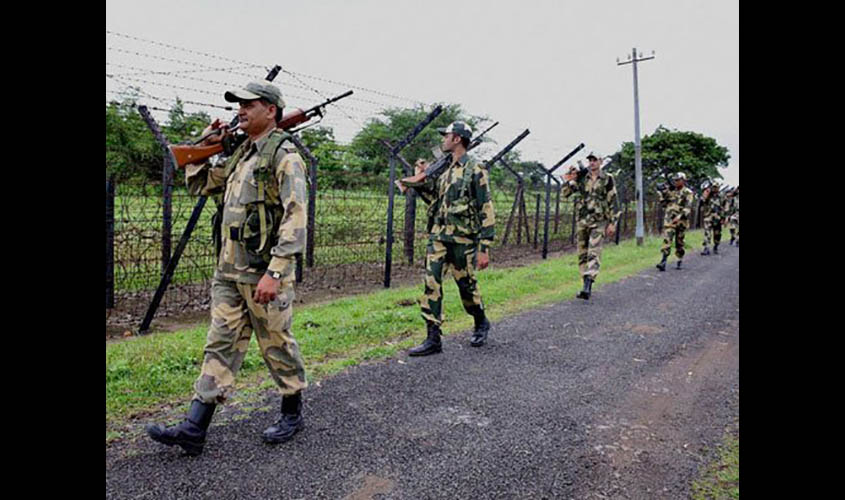New Delhi: More than 3,800 illegal Bangladeshi immigrants have been arrested by the Border Security Force (BSF) between 2017 and September 2019. However, sources in the BSF say that the actual number of illegal immigrants entering India could be much higher as many of these people either go undetected or have managed to get hold of valid Indian documents.
In 2019, until 13 September, the BSF caught 914 Bangladeshi nationals who were trying to infiltrate into India from the border areas of the southern parts of Bengal. In 2018, the BSF caught 1,677 such illegal immigrants, while in 2017, the number was 1,274.
Earlier this month, on 12-13 September, the BSF apprehended 20 illegal immigrants from Bangladesh—six from the Angrail border and 14 from the Swarupnagar area of North 24 Parganas district.
Sources in the BSF say that 80% of the illegal immigration from Bangladesh takes place in the southern parts of Bengal owing to the unfenced and riverine borders. These are traditional routes between India and Bangladesh. South Bengal shares around 900 km of border with Bangladesh, of which more than 50% is either unfenced or riverine in nature, making it difficult for the security forces to detect infiltration.
The border areas that are prone to infiltration include those in Bongaon, Angrail, Jayantipur, Ghojadanga and Gede in North 24 Parganas district; in Malda and Baharampur districts; Hakimpur in Dinajpur and Mollapara border in Krishnanagar in Nadia district, among others.
A senior BSF officer told The Sunday Guardian that an organised racket was being run in both India and Bangladesh to push Bangladeshi nationals into India through these border areas. These touts manage to get valid Indian documents for these infiltrators to escape from the BSF.
“In border areas of Bongaon and Basirhat, organised gangs are in the business of bringing people from Bangladesh into India. These people, who cross over into India, already possess some valid Indian documents like Aadhaar card or Indian voter ID card and we have come to know these fake Indian documents are made in Bangladesh. It is very difficult to identify these fake documents for the BSF officers posted on the ground and this is how many escape,” the BSF officer said.
The BSF officer also alleged that the police in West Bengal and politicians in Bengal were non-cooperative and it was with their support that the Bangladeshis were able to stay in India either for vote bank or for a cut that they received from the touts and the infiltrators.
“Border management is not the responsibility of the BSF alone; the local administration and the police also need to take part for effective border management. But what we have seen in Bengal is that the local police is supporting these illegal immigrants, because the police gets hafta (extortion money) from them; for the politicians, they become their vote bank. We have seen that the Bangladeshis we handed over to the police get their Aadhaar cards when they were produced in court and while in police custody. How is this possible?” asked the officer quoted.
The illegal immigrants who cross over to India mostly belong to the lower strata of society and come to India in search of jobs. According to sources, these people, who mostly belong to the minority community, are pushed into India by Bangladesh to search for better jobs.
BSF officers from West Bengal say that houses located right up to the “Zero Line” (end point on the border) pose a challenge as many infiltrate into India in the wee hours and stay in these houses while their documents are being arranged.
Another BSF officer from Bengal told this correspondent: “The BSF does not have the manpower to form a human chain along the entire border and the interception posts are located about 300 metres into the hinterland, whereas these houses are just on the Zero Line. Many illegal immigrants cross the border, stay there and once their documents are arranged, leave.”

